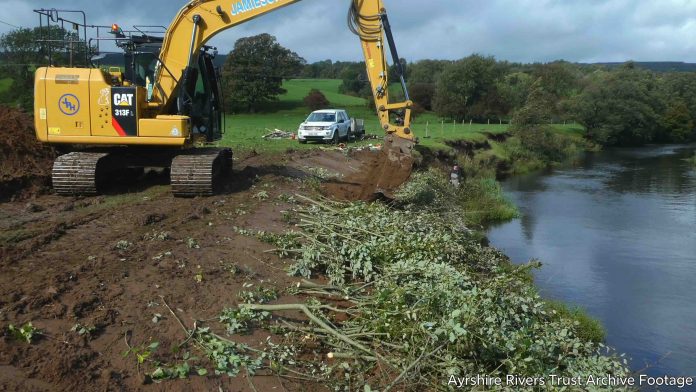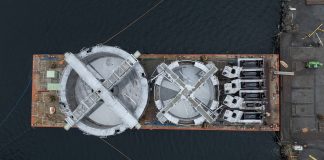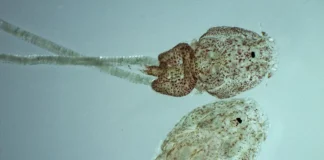Salmon Scotland Expands Wild Fisheries Fund to Address Declining Salmon Stocks
Scotland’s wild salmon conservation efforts are set to receive a further financial boost as Salmon Scotland opens applications for its 2025 wild fisheries fund, with an additional £230,000 to be invested over the next year.
The funding forms part of a five-year, £1.5 million commitment from Scotland’s salmon farming industry, aimed at addressing the long-term decline in wild salmon numbers through habitat restoration, predator protection, and river restocking initiatives.
Now in its fourth year, the fund—open to all river catchment organisations across Scotland—will prioritise projects in areas where aquaculture and wild salmon fisheries overlap. Applications close on March 31.
Declining Populations and Conservation Challenges
Wild salmon and sea trout populations in the UK have declined significantly over the past decades, largely due to habitat loss and rising water temperatures. Marine survival rates have plummeted to between 1% and 5%, compared to around 25% three decades ago.
The Scottish Government has identified additional pressures, including predation from seals, birds, and fish, the spread of non-native plant species, and barriers to migration such as dams and weirs.
Since its launch in 2021, the wild fisheries fund—formerly known as the wild salmonid fund—has invested approximately £475,000 in projects aimed at restoring fish populations. Past initiatives include restoring a historic dam in the Western Isles to improve spawning access, reducing riverbank erosion, and creating habitat for juvenile salmon.
Among the projects funded last year was the West Coast Genebank, a partnership between Otter Ferry Seafish and the River Ruel Improvement Association, which focuses on growing wild salmon from juveniles to adults in hatcheries before releasing them back into the river. Another funded initiative, led by Ayrshire Rivers Trust, involved habitat restoration on the Mauchline Burn, installing livestock fencing and planting trees to stabilise riverbanks and create habitats for young salmon.
Industry Collaboration
The 2025 fund will again be co-ordinated by Jon Gibb, a fisheries manager based in Fort William, who has played a key role in fostering collaboration between salmon farmers and wild fisheries groups.
“As a salmon fishery manager with over 25 years of experience on the west coast of Scotland, I am once again delighted to coordinate this fund on behalf of Salmon Scotland,” Gibb said.
“In 2023, wild Atlantic salmon in Scotland and across the UK were officially classified as an endangered species. This keystone species faces serious threats from a wide range of impacts both in the river and at sea, and projects aimed at better understanding and mitigating these threats are urgently needed.”
Andrew Barker, of the River Ruel Improvement Association, highlighted the importance of the funding:
“We are extremely grateful to the Salmon Scotland wild fisheries fund for making possible a very exciting project to grow to maturity salmon parr taken from the river before releasing them back into the river to spawn.
“This pilot scheme is being developed using the unique onshore facilities of Otter Ferry Seafish and with the help of the Argyll Fisheries Trust, and it is hoped that it will provide a blueprint in due course for other Scottish rivers to protect and increase their salmon stocks.”
Struan Candlish, a fisheries biologist with Ayrshire Rivers Trust, described the fund as “incredibly valuable” to conservation efforts:
“This is the third year we’ve been supported by the fund, and we just can’t overstate how important it is. The impact this project and others like it have is significant and will help to support wild Scottish salmon for many years to come.”
Salmon Farming Industry’s Role in Conservation
Tavish Scott, chief executive of Salmon Scotland, emphasised the importance of industry collaboration in reversing the decline in wild salmon stocks:
“Wild salmon is one of Scotland’s most iconic species, but its numbers have been in decline for decades on both the east and west coasts, due to climate change and habitat destruction.
“Scotland’s salmon farmers want to continue playing their part in finding solutions, working constructively with the wild fish sector and taking meaningful action to save wild salmon.
“Many salmon farmers are anglers themselves, and most in the fisheries and angling sectors understand the importance of a healthy, shared environment where fish can thrive in our waters.
“Through the success of farm-raised salmon, we’ve developed world-leading expertise in hatching and rearing salmon that can thrive at sea.
“Alongside financial support for projects, our members are sharing their knowledge and experience to assist wild fisheries with re-stocking, further proving that collaboration is key to reversing the worrying decline in wild salmon numbers.”
The fund is expected to continue supporting projects that enhance river habitats and wild salmon survival rates, with applications now open for the 2025 funding round.







